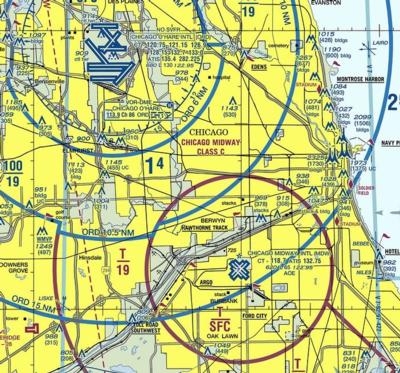Tue, Dec 13, 2016
Helping Reduce Delays At Chicago Area Airports
The FAA is now helping to reduce or eliminate one source of delay at Chicago O’Hare and Midway through the use of Data Communications (Data Comm), part of the FAA’s NextGen air traffic control modernization. Data Comm will help reduce delays by making pilot-controller communications shorter and more accurate, which could help keep a plane in the departure line and on schedule. It is now operational at both of Chicago’s major airports.

The FAA recently conducted a tour of the O’Hare air traffic control tower and a United Airlines jet to show Data Comm in action. Representatives from the FAA, United Airlines, the National Air Traffic Controllers Association, and the Professional Aviation Safety Specialists were on hand. Inside the tower, controllers enter flight departure clearance instructions into a computer and push a button to electronically send the information to an aircraft’s flight deck. Flight crews view the information, press a button to confirm receipt, and press another button to enter the instructions into the aircraft’s flight management system.
This process saves valuable time. For instance, when pilots read back a series of complicated waypoints in a clearance with even one mistake – called a “readback/hearback” error – they must repeat the instructions until they are correct. These corrections take time, and even a short departure clearance can take two to three times longer than one communicated via Data Comm.
This benefit becomes even more pronounced during bad weather, when Data Comm enables equipped aircraft to take off before an approaching storm closes the departure window, while aircraft relying solely on voice communications remain stuck on the ground waiting for the storm to pass.
Data Comm is expected to save operators more than $10 billion over the 30-year life cycle of the program and save the FAA about $1 billion in future operating costs.
The first Data Comm-equipped airports – Salt Lake City and Houston’s George Bush Intercontinental and William P. Hobby – received tower departure clearance services eight months ahead of schedule in August 2015.
The FAA and its industry partners have delivered Data Comm to more than 50 towers to date, almost two and a half years ahead of the original plan. The expansion into en route airspace is the next phase of the program and will start in 2019.
(Source: FAA news release)
More News
Circle To Runway (Runway Number) Used by ATC to inform the pilot that he/she must circle to land because the runway in use is other than the runway aligned with the instrument appr>[...]
Aero Linx: National Aviation Safety Foundation (NASF) The National Aviation Safety Foundation is a support group whose objective is to enhance aviation safety through educational p>[...]
At Altitude Of About 250-300 Ft Agl, The Airplane Experienced A Total Loss Of Engine Power On November 6, 2024, at 1600 central standard time, a De Havilland DHC-1, N420TD, was inv>[...]
From 2009 (YouTube Edition): Three Hour Flight Was 'Flawless' -- At Least, Until Mother Nature Intervened For anyone who loves the aviation business, this was a VERY good day. Afte>[...]
Also: AMA Names Tyler Dobbs, More Falcon 9 Ops, Firefly Launch Unsuccessful, Autonomous F-16s The Air Force has begun ground testing a future uncrewed jet design in a milestone tow>[...]
 ANN's Daily Aero-Term (05.05.25): Circle To Runway (Runway Number)
ANN's Daily Aero-Term (05.05.25): Circle To Runway (Runway Number) ANN's Daily Aero-Linx (05.05.25)
ANN's Daily Aero-Linx (05.05.25) NTSB Prelim: De Havilland DHC-1
NTSB Prelim: De Havilland DHC-1 Classic Aero-TV: The Boeing Dreamliner -- Historic First Flight Coverage
Classic Aero-TV: The Boeing Dreamliner -- Historic First Flight Coverage Airborne-NextGen 05.06.25: AF Uncrewed Fighters, Drones v Planes, Joby Crew Test
Airborne-NextGen 05.06.25: AF Uncrewed Fighters, Drones v Planes, Joby Crew Test



